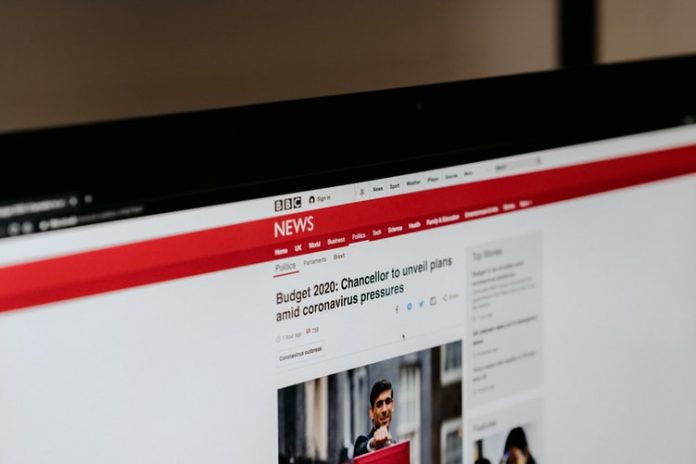This article is written by Kaartikay Agarwal, a student from National Law University, Delhi. In this article, the author explains the economic conditions and the budget in this time of global pandemic.
Table of Contents
Introduction
The management and planning of our financial resources in the wake of COVID-19 has been a series of unfortunate events. The chronology of events was not taken into account before the budget, the first COVID-19 case was in the news as early as December 2019 ,the first case outside China was reported on 13th January, 2020 and on 30th January, 2020 the WHO declared Coronavirus as a Public Health Emergency of International Concern (PHEIC) whereas FM Nirmala Sitharaman presented the Union Budget 2020-2021 on 1st February, 2020 without taking into account the already unfolding crisis and without any safeguards for such a pandemic impacting India, which in retrospect was not the wisest move especially keeping in mind the current prevailing situation where the Indian economy is set to be on a complete near lockdown for more than a month. With the GDP set to be impacted by a drop of more than 3% and unemployment touching a 45-year-old high just a few years ago, set to increase, Budget 2020 was a golden opportunity lost.
The Halwa before the Ceremony
The fall of the Indian economy must not go unnoticed prior to the period of the lockdown and responsibility has to be earmarked lest all future economic problems are blamed on the current crisis and a consequence of national security and welfare over a certain government’s responsibility. Before Budget 2020, the Indian economy was already limping. GDP growth rate was at a downward spiral and unemployment was skyrocketing, so was the rising amount of bad loans in Banks especially PSU banks which were the hardest hit. Manufacturing, private consumption, and construction- three important growth measures in any developing economy were much lower in the Financial year 2019-20 in comparison to the financial year 2018-19. Forecasts of a long and harrowing recession were already made by many economists including Abhijit Banerjee who went on to say that the Indian economy was already in a recession before Budget 2020 and long before the COVID-19 lockdown.

Healthcare in an emergency ward
Healthcare has long been a subject that has been largely ignored by the political classes, the Delhi 2020 election being a fortunate exception, including in the general elections of 2019 which was dominated by issues of national security and identity. In 2018, India ranked 145th out of 192 countries in healthcare access and quality. Although the BJP manifesto did talk about ‘Ayushman Bharat’ or ‘Modicare’ there was a looming silence on healthcare expenditure which remained a little over 1% of the GDP as opposed to the National Health Policy 2017 target of 2.5%. India ranks 184th out of 191 countries in terms of GDP% spend on healthcare. According to the national health profile, there are 0.55 beds available per 1000 people in India with populated states such as Bihar faring even worse with just 0.11 beds available per 1000 people. India’s annual health care spend (out of pocket and public) hovers around 4% of the GDP. Failure of various government to provide for adequate healthcare facilities leads people to incur more out of pocket expenses and with a population that was already reeling under a recession like situation, this is bound to take a heavy tool.
In the Consumer Education and Research Centre case, the right to health was explicitly declared to be an integral facet of the right to life under Article 21. In the Paschim Banga case, the court held that it is the primary duty of a welfare state to ensure that medical facilities are adequate and available to provide treatment. The court further added that guaranteeing social and constitutional rights should be irrespective of financial constraints. Under Article 47, the government is obliged to raise the level of nutrition and the standard of living along with public health facilities. In People’s Union for Democratic Rights, special emphasis was given to the weaker sections and protection of their fundamental rights. In our country due to large scale inequalities, a person from an underprivileged background has to rely on the public healthcare infrastructure for all his need, the failure of successive governments to build adequate infrastructure leaves this section to be the most severely impacted and it is the very same section of our society whose economic woes have mushroomed due to the lockdown.
In a situation where the economic picture was already looking grim and the healthcare sector already performing abysmally across parameters, the picture before budget 2020 did not look rosy at all.
Budget 2020 – What it had and what it did not
The recent budget was the first full budget presented by Modi 2.0 and FM Sitharaman’s second budget. The health budget saw a marginal increase of just 10% to 69,000 crore from 62,529 crore for this financial year in comparison with the previous financial year. The planned expenditure is nowhere near the 2.5% of the GDP mark as envisioned by the National Health Policy of 2017 and lacked any preparatory mechanism for a possible pandemic. One significant announcement was the expansion of Ayushman Bharat to cover more districts and the building of more hospitals across districts with no empanelled hospitals for the scheme under a PPP model in tier II and tier III cities. Further, around 1.5 lakh Health and Wellness Centres (HWC) were planned to be set up by 2022. Although the inclusion of private players and incentivizing private investment in healthcare in terms of a PPP model is much needed, this has moved has come much too late and has not been followed up with removing the inherent red tape-ism and crony capitalism present in the private healthcare space.
What was missing from the Budget was any mention of a possible pandemic impacting India and thus was missing any safeguards even though it was staring us right in the face. The government has been accused of making a conscious effort to move from healthcare provisioning to healthcare purchaser. This, in the current context, means the government moving from a body that provides healthcare to a body that insures healthcare. 9% of the total healthcare budget has been allocated to 3 insurance schemes with Ayushman Bharat constituting a major chunk of the same. Insuring a person with monetary benefits cannot be equated with the person receiving healthcare in the first place. If a tribal living in Chattisgarh does not have an accessible hospital to go to if he is to be diagnosed with COVID-19, what good will monetary compensation do for the individual. This is in direct contrast with the government’s current slogan of ‘Jaan hai, Toh Jahaan hai’. While the government in the current lockdown is advocating socio-economic curbs and loss of livelihood in the favor of saving lives, its policies have tragically moved on to providing socio-economic benefits in place of developing healthcare on the ground. The budget for pandemic preparedness was increased by a minuscule amount of 1 crore to 7 crores from the previous 6 crores.
The ICMR which has been at the forefront of the fight against COVID-19 in R&D was allocated 1795 crores in comparison to its demand of 2300 crores, creating a shortfall of 669 crores. More money was asked for setting up labs and testing facilities, something which was not looked carefully upon despite COVID-19 already being declared as a global health emergency a day before the presentation of the budget. So while India has been criticized due to a poor number of tests per population, no fund was earmarked was a significant scaling of our testing facilities even though we have one of the highest population densities in the world and a poor health infrastructure both of which have left the country with no other option but a complete draconian shutdown which may have been a necessity but was certainly a preventable one.
Another area of interest that has come to light due to the current pandemic is mental health. Mental health disorders are slowly turning out to be major public health concerns across the globe and lead to severe consequences like decreased productivity and living standards. Anxiety, depression, and suicides have spiked during the current pandemic. Many deaths have been reported as human costs of the lockdown, a number which has now crossed 200. A majority of these deaths have been a result of economic or social stress factors including loneliness and fear. The budget allocated for the National Mental Healthcare program remained a constant 40 crores compared to the previous year which is somewhere around 0.05% of the total healthcare budget. The Mental Healthcare Act of 2017 guarantees every person access to healthcare and treatments by the government in the spirit of the vision of ‘healthcare for all by 2027’. An effective implementation of the MHP Act 2017 requires proper infrastructure, mental health professional and public awareness campaigns. During the Ebola outbreak in Sierra Leone, there was a similar imposition of widespread travel and social curbs, this leads to a rise in teenage pregnancies as well as alcohol addiction among other mental health issues. The government even after the lockdown has made no efforts to fill in the gap or create a corpus fund for mental healthcare services leaving the majority of the load to be managed by private companies and NGOs.
Conclusion
The FM announced a package of 1.7 crores and a slew of other measures have been further announced by the RBI to cushion the fall of the economy but the question, while some have called for a budget 2.0 for the financial year and others have asked the government to forget the fiscal deficit, the question still remains that if reasonable foresight was applied, would we still be in such a dire situation. These sobering shreds of evidence have a deep message for all of us, that we need to start questioning our leaders and their policies not just on national security or their religious beliefs but on the real issues of national importance -health and education. This pandemic should be treated as a wakeup call for all. The government needs to invest and educate more on health, create a conducive environment for private players while retaining its spheres and needs to be better prepared. We cannot allow this pandemic to provide the government with the shield of national emergency where it can conveniently hide its economic mismanagement. We let this virus catch us off guard and laid bare our weak capacities, let us better anticipate the next one.
LawSikho has created a telegram group for exchanging legal knowledge, referrals and various opportunities. You can click on this link and join:
 Serato DJ Crack 2025Serato DJ PRO Crack
Serato DJ Crack 2025Serato DJ PRO Crack









 Allow notifications
Allow notifications



